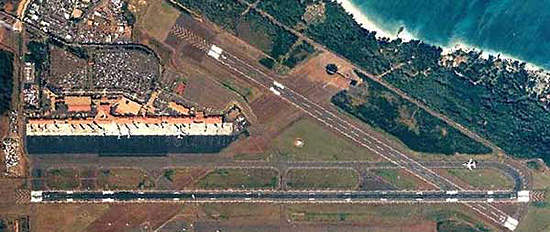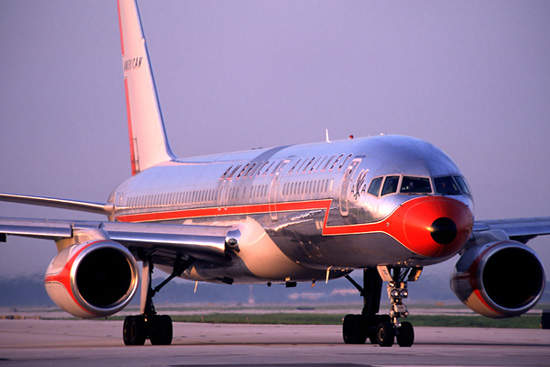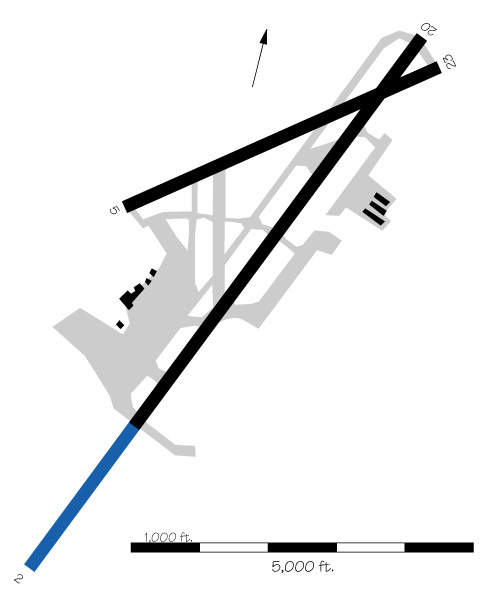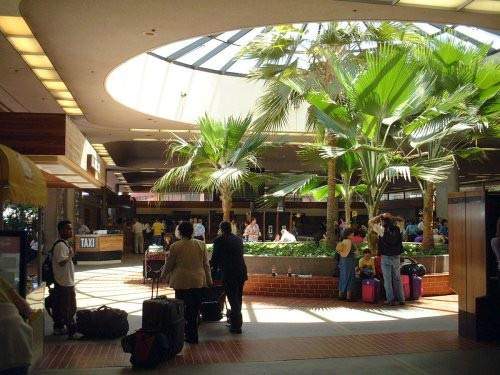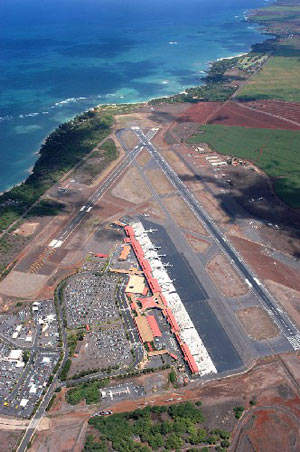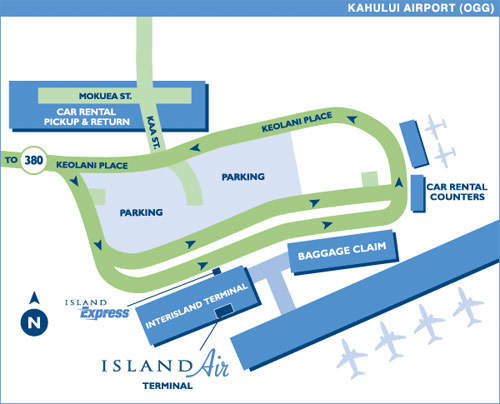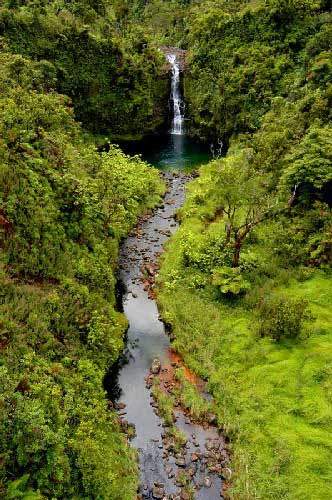Kahului Airport is located on the northern edge of the land bridge between Haleakala and the West Maui Mountain Range on the island of Maui, part of the islands of Hawaii.
The airport occupies 1,391 acres of land and is located three miles east of the town of Kahului. In 1998, the Hawaiian State Legislature appropriated $180m for the work that would strengthen the existing runway, build a 2,800ft runway extension, a new airport access road and allow for airport terminal improvements.
This plan was amended and a new plan formed in 2001. The revised plan included the construction of a cargo building, the installation of more fuel tanks, improving helicopter parking and improving additional lease lots at the airport.
This plan has also been slow to be put into action due to opposition to expansion from many local Maui residents.
The original proposal to extend the existing 7,000ft runway was greeted with tremendous opposition from many of the island’s inhabitants, who took full advantage of opportunities to oppose the airport expansion vocally.
Environmental impact at Kahului
The opposition to the runway extension centred on the impact it would have on the environment, in particular the impact on the environment from alien species being introduced to the island.
In the state’s biological assessment report of Kaluhui Airport the author stated that it made sense to have one port of entry, namely the international airport at Honolulu with state-of-the-art quarantine procedures for baggage handling and intercepting foreign pests.
The report added that alien introduction risk increased with each airport handling international flights and that there are hundred of thousands, if not millions of species that could survive very well on Maui if given the opportunity.
Lack of infrastructure at Kahului
Despite the perceived lack of infrastructure on the island tourism is one of its main incomes and since plans were first put forward to expand and improve the airport facilities a great many funds have been spent on improvements to the rest of the island.
Most flights into Kahlui originate from Honolulu International Airport; the Honolulu-Kahului corridor is one of the busiest air routes in the USA, having handled 5.4m passengers in 2008. Because of the added protection of Honolulu airport for quarantine reasons this cannot really be used as an excuse to oppose expansion of the airport.
Margin of safety for runway
Kahului Airport is composed of two main runways designated Runway 2/20 and Runway 5/23 respectively. It also is host to an asphalt helipad.
The Department of Transportation Airport Planning Division acknowledged that the margin of safety of an expanded 9,600 feet runway for the larger planes it hopes to accommodate will be no different than the margin of safety for mainland bound aircraft currently used on the existing 7,000ft runway.
It means that larger planes will not be able to take off fully loaded to mainland and overseas destinations, just as current aircraft must restrict their take-off weight.
Current Kahului facilities
The $42.6m Kahului Airport terminal building was opened in October 1990. The terminal was 267,000ft² and included an 82,000ft² ticketing terminal, group tour bus terminal and group baggage drop off, and a 78,000ft² two-storey central building which houses the airport administration offices, hold rooms, jetways, restaurant and concessions.
The terminal building also has USDA agricultural inspection, and baggage claim areas on the ground level. There are two Transportation Security Administration (TSA) security checkpoints, one just after the ticketing counters, and the other just before entering the baggage claim area.
From the TSA security checkpoints, escalators and stairways lead to a central atrium on the second level and 40 gates on two concourses. A total of 18 jetways are available and there are six gate hold areas designated A-F with three jetways each.
Gates with odd numbers are outfitted with jetway systems, while gates with even numbers are designated as emergency exits and have stairs that lead to the outside.
The airport’s terminal design and gates were originally designed to handle inter-island flights on narrow-body aircraft like the Boeing 717 and Boeing 737. However, Kahului has experienced a boom of long-haul overseas flights from the mainland US using wide-bodied aircraft like the Boeing 767 and Boeing 777.
Aircraft used for inter-island flights can be accommodated at all gates, while those used for overseas operations cannot.
Kahului airport expansion
The airport is currently going through several phases of expansion and it is hoped that the airport will eventually attain permanent international airport status with potential.
As a result of the passage of several Hawaii State Legislature bills in 1998 and 2001, Kahului is planned to undergo expansion for new, larger facilities, lengthening of runways, increasing of fuel storage capacities and construction of new access roads.
In early 2005, Governor Linda Lingle released $365m for construction of an extended ticketing lobby (two-bay extension), two new baggage claim carousels and a a new alien species building.
A 2,000kw emergency power system, a new cargo building, construction of a new apron and an additional ten jetways, which will replace the current ones are part of the expansion.
In addition there will also be a new six-lane airport access road that would run from the airport, intersecting Haleakala Highway and Hana Highway, and run parallel to Dairy Road where it would merge with a new grade-separated interchange between Puunene Avenue (highway 350), Dairy Road and Kuihelani Highway (highway 380). The work was completed by October 2006.
In May 2009, $8.31m was granted for upgrading apron pavement and taxiway at airport. Out of the grant approximately $6.9m was dedicated for apron while the remaining is allocated for taxiway and extension of aircraft parking apron. The works include reconstruction of apron, increasing the width of hardstand, extending the taxiway and improving runway safety area. All the works are scheduled to be completed in 2010.
Cargo expansion
Improvements being made include a 34,500ft² cargo building, which will consist of 27,100ft² of covered storage space and 7,400ft² of airline office space.
The improvement plans also include relocating the cargo building adjacent to the agricultural inspection building.
The new location will provide shippers with easier access to the cargo facility, where cargo, including fresh produce, will be stored in a covered facility rather than in the open sun as it awaits being loaded onto the airplanes.
As part of the project, the Department of Transportation will realign Haleakala Highway to the northeast to accommodate the improvements, construct an access road from Haleakala Highway to the new facilities and construct a postal service access road. The project also will include an employee parking area.
The estimated construction cost for the project is $23.5m ($14.1m is Federal). The project was designed by Pacific Architects Inc. The project contractor is Hawaiian Dredging Construction Company Inc. The new cargo building construction began in April 2006 and is scheduled for completion in September 2010.
Security issues
In June 2007 the Maui Planning Commission approved a special management area permit for a new $18m explosive detection system and facilities for checked baggage at Kahului Airport.
An EDS baggage screening equipment was installed in 2009 and is currently being upgraded. The upgradation will be completed in 2010. The new building would be adjacent to and south of the existing baggage screening area.
Six explosive detection system screeners will be installed behind the current ticketing / check-in terminal area. New baggage-handling equipment will also be installed to take bags from the individual airline ticket counters to the screeners to check for explosives.
Suspect and unknown bags that fail the first two levels of security screening are automatically transferred to a new explosive trace detection room for inspection.
The move to install upgraded explosive detection devices at Kahului Airport makes Maui the first island to take such a security measure.

